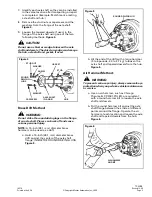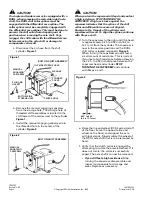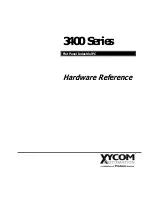
TP-9648
(16579)
Revised 11-18
Printed in the USA
Copyright Meritor, Inc., 2018
Page 3
Unlocking the DCDL
When the vehicle can safely operate at speeds above 25 mph and
driving conditions have improved, disengage the DCDL following the
recommended procedures:
1.
Flip the control switch to the “UNLOCK” position.
2.
Let up momentarily on the accelerator to relieve torque on the
gearing, allowing the DCDL to unlock. It may take up to 1/2
mile of driving before the differential unlocks.
NOTE:
If the DCDL is connected through the low speed range of the
transmission, shifting out of low speed range will also unlock the
differential.
NOTE:
Be aware that it is possible for the assembly to become
torque bound if the condition requiring differentiation is not relieved
prior to moving the switch to the OFF position. In a torque-bound
condition, the light will continue to illuminate, indicating the lock is
still engaged. Typically, it will disengage during normal
maneuvering. Under some conditions, however, stopping and
shifting to Neutral will relieve the torque-bound condition and allow
disengagement.
3.
When the differential lock is deactivated, the indicator light will
be off or the audible signal will stop.
4.
Resume driving at normal speed using good driving judgment.
Unlocking the IAD
When poor road or highway conditions have passed, follow these
steps to unlock the IAD:
1.
Flip the switch to the “UNLOCK” position while maintaining
vehicle speed.
2.
Let up momentarily on the accelerator. The differential lock will
promptly disengage.
3.
Resume a safe vehicle speed.
Locking Both the IAD and the DCDL
1.
When electing to use both the IAD lock and the DCDL, first
engage the IAD lock, and when the vehicle speed falls to 25
mph or below, engage the DCDL.
2.
Engage the IAD lock at any speed except when a wheel is
slipping, spinning or losing traction.
3.
Engage the DCDL only when the vehicle is traveling at 25 mph
or less and when the wheels are not slipping, spinning or
losing traction.
Unlocking Both the DCDL and the IAD
1.
When traction conditions improve, disengage the DCDL before
vehicle speed exceeds 25 mph.
2.
Never disengage the DCDL (or the IAD) lock if the vehicle
wheels are slipping, spinning or losing traction.
3.
Disengage the DCDL when the vehicle is capable of achieving
a travel speed above 25 mph.
4.
Disengage the IAD lock when road conditions return to normal
and further adverse road conditions are not anticipated.










































